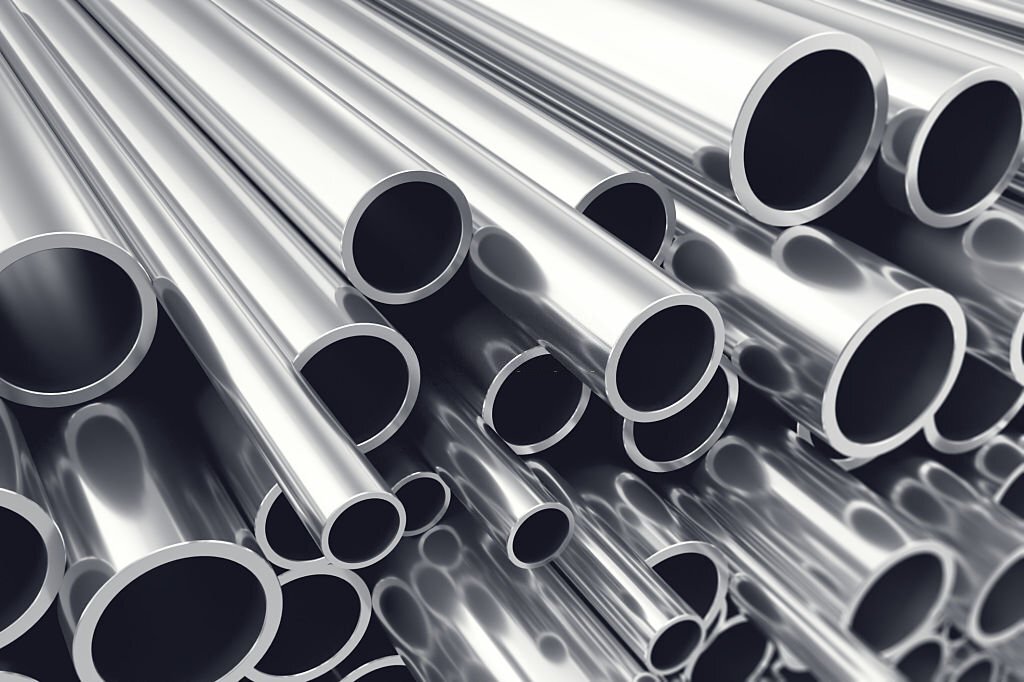Quick Inquiry
When it comes to selecting the right material for various applications, understanding the differences between different types of steel is crucial. Two commonly used steel categories are carbon steel and alloy steel. While they may seem similar at first glance, they have distinct characteristics and are suitable for different purposes. This article explores the differences between carbon steel and alloy steel, focusing on their use in manufacturing cold-drawn tubes.
What is Carbon Steel?
Carbon steel is a type of steel that primarily consists of iron and carbon. It is the most common form of steel used in many industries due to its affordability, versatility, and excellent mechanical properties. Carbon steel is known for its high tensile strength and durability, making it suitable for a wide range of applications.
In the context of cold-drawn tubes, carbon steel tubes are often preferred for their cost-effectiveness and ease of manufacturing. The cold-drawing process involves pulling the tubes through a die to reduce their diameter and achieve the desired dimensions. Cold-drawn carbon steel tubes are known for their smooth surface finish and precise dimensional accuracy. They are widely used in automotive, construction, and general engineering industries, where cost efficiency and moderate strength are important considerations.
Also Read: Cold Drawn vs. Hot Rolled vs. Cold Rolled Seamless Tubes: Which One to Choose?
What Is Alloy Steel?
Alloy steel comprises additional alloying elements apart from iron and carbon. These alloying elements can include elements such as chromium, nickel, manganese, vanadium, and more. Adding these elements enhances the mechanical properties of the steel, including increased strength, hardness, resistance to wear, corrosion, and heat.
Cold-drawn alloy steel tubes offer specific advantages depending on the chosen alloying elements. For example, chromium-molybdenum alloy steel tubes, such as ASTM A519 4130, are commonly cold-drawn and exhibit excellent strength, toughness, and weldability. They are often used in applications where high strength and resistance to fatigue are required, such as in the aerospace and automotive industries.
The choice between carbon steel and alloy steel for cold-drawn tubes depends on the specific requirements of the application. Carbon steel is suitable for applications where cost efficiency, high strength, and ease of manufacturing are essential. Alloy steel, with its superior mechanical properties, is preferred when higher strength, wear resistance, or specialised characteristics are required.

Applications of Cold-Drawn Carbon Steel Tubes:
- General Engineering: Carbon steel tubes find extensive use in general engineering applications such as structural components, machinery, and equipment. They offer strength, durability, and affordability, making them suitable for various industries.
- Automotive Industry: The cold-drawn tubes are commonly employed in the automotive industry for applications like exhaust systems, frames, and suspension components. They provide the necessary strength and resistance to withstand the demanding conditions of automotive environments.
- Construction: They are widely used in construction for applications such as scaffolding, poles, and supports. Their high tensile strength and ease of fabrication make them ideal for structural purposes.
- Plumbing and HVAC: They are used for plumbing, heating, ventilation, and air conditioning (HVAC) systems. They offer excellent corrosion resistance and can withstand high-pressure environments, ensuring reliable fluid and gas transportation.
Advantages of Carbon Steel
- Cost-Effective: Carbon steel is relatively affordable compared to alloy steel, making it a cost-effective option for various applications.
- Versatility: It is available in different grades and can be easily fabricated, welded, and machined to suit specific requirements.
- Good Mechanical Properties: Cold-drawn carbon steel tubes possess excellent mechanical properties, including high tensile strength and good ductility, providing structural integrity and reliability.
- Corrosion Resistance: Certain carbon steel tubes can be treated or coated to enhance their corrosion resistance, making them suitable for various environments.
Applications of Alloy Steel Tubes
- Oil and Gas Industry: Alloy steel tubes are extensively used in the oil and gas industry for applications such as pipelines, downhole equipment, and drilling tools. They offer superior strength, resistance to corrosion and wear, and high-temperature stability.
- Aerospace Industry: They find significant applications in the aerospace industry, where lightweight and high-strength materials are essential. They are used in aircraft structures, landing gears, and engine components.
- Power Generation: They are utilised in power plants for boiler tubes, heat exchangers, and superheater tubes. They can withstand high temperatures and pressures, ensuring efficient heat transfer and long-term reliability.
- Automotive Performance: The cold-drawn tubes, such as chromium-molybdenum steel, are used in high-performance automotive applications, including roll cages, suspension components, and driveshafts. They offer an excellent strength-to-weight ratio and improved fatigue resistance.
Advantages of Alloy Steel
- Superior Strength: Alloy steel tubes exhibit higher strength, allowing for reduced wall thickness and weight while maintaining structural integrity.
- Enhanced Mechanical Properties: They offer improved hardness, toughness, and wear resistance, making them suitable for demanding applications where high-stress conditions are encountered.
- Corrosion and Heat Resistance: They can be formulated with specific alloying elements to provide enhanced corrosion resistance and withstand high-temperature environments, extending their service life.
- Specialised Properties: They can be tailored to exhibit specific properties such as magnetism, electrical conductivity, or thermal conductivity, making them suitable for diverse industrial applications.
Cold Drawn Carbon Steel Tubes – ASTM A179/ASME SA179
ASTM A179/ASME SA179 is a seamless cold-drawn carbon steel tube. These tubes are widely used in various industrial applications requiring heat transfer, such as in power plants, chemical plants, refineries, and other processing industries.
This specification covers tubes with an optimized wall thickness and is designed for heat transfer applications. These cold-drawn tubes are manufactured from carbon steel, which ensures good thermal conductivity and corrosion resistance while maintaining mechanical properties suitable for the intended service.
Key Features
- Seamless Tubes: The tubes specified in ASTM A179/ASME SA179 are seamless, meaning they are manufactured without any longitudinal welds. This eliminates the possibility of leakages or weak points, ensuring efficient heat transfer and structural integrity.
- Cold-Drawn Process: The manufacturing process involves cold drawing the seamless tubes through a die to reduce their diameter and wall thickness. This process enhances the dimensional accuracy, surface finish, and mechanical properties of the tubes.
- Low-Carbon Steel: These tubes are made from carbon steel, specifically with a maximum carbon content of 0.06%. This ensures good weldability and avoids the formation of harmful carbides during the welding process, which could lead to reduced corrosion resistance.
- Heat-Transfer Applications: These tubes are primarily used in heat exchangers and condensers, where they facilitate the transfer of heat between fluids. The seamless construction and high-quality surface finish of the cold-drawn tubes promote efficient heat transfer, making them suitable for various industries.
- Mechanical Properties: The tubes exhibit good mechanical properties, including high tensile strength and yield strength. These properties enable the tubes to withstand the pressure and stress encountered during heat transfer operations.
- Corrosion Resistance: Although carbon steel may be susceptible to corrosion in certain environments, the tubes are often used in applications where corrosion resistance is not a primary concern. The tubes can be externally coated or protected if necessary to enhance their resistance to corrosive elements.
Cold Drawn Alloy Steel Tubes – ASTM A519
ASTM A519 is a widely recognised specification for seamless alloy steel tubing used in mechanical applications. These cold-drawn tubes are known for their exceptional mechanical properties, precision dimensions, and excellent surface finish.
Key Features
- Alloy Steel Composition: ASTM A519 alloy steel tubes are manufactured from a variety of alloying elements, including chromium, molybdenum, nickel, and others. These alloying elements impart specific properties to the tubes, such as enhanced strength, hardness, toughness, and resistance to wear and corrosion.
- Cold-Drawn Process: The cold-drawing process used to manufacture ASTM A519 tubes involves pulling the tubes through a die at room temperature. This process enhances the mechanical properties of the tubes, resulting in improved dimensional accuracy, increased strength, and a smooth surface finish.
- Precision Dimensional Accuracy: ASTM A519 tubes are known for their precise dimensional accuracy. They offer tight tolerances on outer diameter, inner diameter, and wall thickness, ensuring compatibility and ease of installation in various mechanical applications.
- High Strength and Toughness: These cold-drawn tubes exhibit high strength and toughness, making them suitable for demanding mechanical applications. They can withstand high-stress conditions, heavy loads, and harsh environments while maintaining their structural integrity.
- Wide Range of Applications: The tubes find application in a diverse range of industries and sectors. They are commonly used in areas such as automotive, machinery, oil and gas, construction, and aerospace, where superior strength, durability, and precise dimensions are crucial.
- Machinability: They are known for their excellent machinability. This allows for easy fabrication and machining processes such as cutting, drilling, turning, and milling, enabling efficient production of complex components and parts.
- Heat Treatment: The cold-drawn tubes can be further treated through processes like annealing, normalising, quenching, and tempering to achieve specific properties or meet certain application requirements.
Discover the Difference with Our Superior Quality Cold Drawn Tubes
At Anand Seamless Ltd, we take pride in offering you the finest cold-drawn tubes available in the market. Our commitment to excellence starts with the manufacturing process. Our tubes are meticulously crafted using the cold-drawn process, ensuring the closest dimensional tolerance and a smooth outside and inside finish.
To guarantee the desired mechanical properties, our tubes undergo precise heat treatment, such as normalisation, stress relief, annealing, and tempering, tailored to meet your specific requirements. This ensures that our seamless pipes and tubes possess the strength and durability needed for critical applications.
We go the extra mile to ensure unrivalled precision. Our multiple roll straightening machines deliver exceptional straightness, with accuracy up to 1mm:1000mm. You can rely on our cold-drawn tubes for seamless installation and flawless performance.
Our stringent Quality checks ensure that every tube we deliver meets the highest standards. For international shipments, we employ our specialised 4 Layer Packing method, guaranteeing that the material reaches your destination in pristine condition.
Choose Anand Seamless Ltd for superior-quality tubes that exceed expectations. Experience the difference our dedication to excellence makes in your projects. Contact us today to discuss your specific requirements and let our experts assist you in finding the perfect solution. Your success is our priority!
lATEST BLOG |
|
How to Choose Right Grade Carbon Steel Seamless Tubes
Carbon steel seamless tubes are essential componen |
|
Basics of Aluminum Finned Tubes
In the world of heat exchange technology, aluminiu |
|
How to Enhance Mechanical Tubes for Various Applications
Mechanical tubes form the backbone of various indu |
|
Why Are U-Tube Heat Exchangers Undeniably Vital: A Complete Guide
In the landscape of industrial heat exchange syste |
|
Introductory Guide to Economizer Tubes
In the dynamic landscape of industrial operations, |


